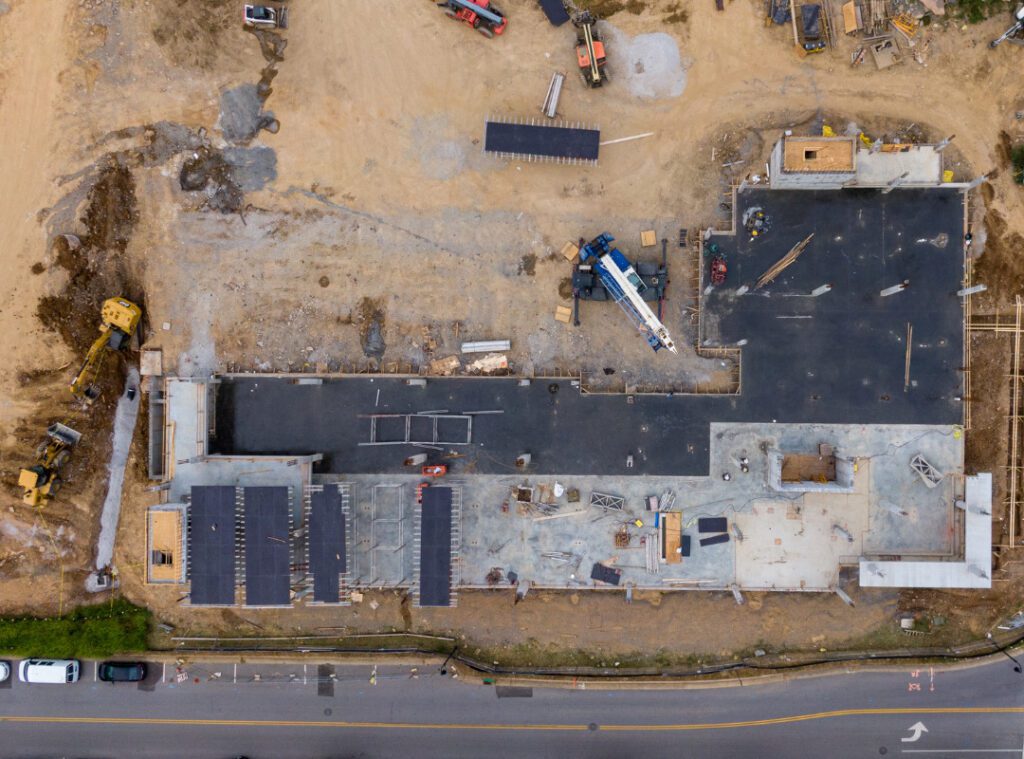Managing a construction job site requires a unique blend of leadership, organization, effective communication, and the strategic use of data. By leveraging data, construction professionals can make informed decisions, streamline processes, and enhance overall site management. In this blog, we will explore best practices that combine data-driven approaches with traditional site management techniques to achieve optimal results.
1. Comprehensive Planning:
Comprehensive planning is essential for effective construction site management. Create a detailed project plan that outlines the scope of work, timeline, available resources, and required permits. Utilize historical project data and analytics to estimate timelines, identify potential bottlenecks, and allocate resources effectively. Incorporate real-time data from sensors, drones, apps, and other technologies to monitor site conditions and make informed decisions about scheduling, resource allocation, and task sequencing.

2. Effective Communication:
Clear and consistent communication is vital for the smooth functioning of a construction site. Establish open lines of communication among all stakeholders, including contractors, subcontractors, suppliers, and workers. Utilize data platforms and project management software that provide a centralized hub for effective communication. These platforms streamline communication, facilitate instant updates, and enable stakeholders to provide feedback and resolve issues promptly. Enhanced communication through data platforms improves transparency and minimizes delays caused by miscommunication.
3. Safety First:
Safety should be a top priority on construction sites. Implement a robust safety program that includes regular training, hazard identification, and risk assessments. Utilize data analytics to monitor workers’ activities and identify potential safety hazards in real-time. Analyze historical safety data to identify patterns and trends, enabling proactive measures to mitigate risks. Empower workers to report safety concerns and foster a culture of safety awareness and accountability.

4. Efficient Resource Management:
Optimizing resource management is crucial for construction site success. Utilize data analytics to identify productivity trends, monitor resource utilization, and optimize schedules. Collect and analyze data on material inventories and equipment usage to avoid shortages and delays. Efficient resource management based on data insights minimizes waste and maximizes cost savings. Regularly monitor resource usage and implement measures to minimize waste.

5. Skilled Workforce and Training:
A competent and skilled workforce is vital for construction project success. Hire experienced professionals and provide ongoing training to enhance their skills. Utilize data-driven performance tracking to evaluate the performance of subcontractors and identify areas for improvement. Foster a positive work environment that encourages teamwork, collaboration, and professional growth. Recognize and reward exceptional performance, boosting morale and motivating the workforce.
6. Regular Site Inspections and Quality Control:
Regular site inspections and quality control are crucial for maintaining project standards. Implement data collection systems to track progress, monitor milestones, and measure key performance indicators (KPIs). Use data analytics to identify deviations from the plan and track productivity. Collect and analyze data on material quality, inspections, and tests to ensure compliance with specifications. Data-driven quality control enables early detection and resolution of issues, reducing rework and enhancing project outcomes.

7. Setting up an Efficient Construction Site:
Efficiency begins with the proper setup of the construction site. Consider the following factors to optimize site efficiency:
a. Site Layout and Organization: Carefully plan and optimize the layout of the construction site. Consider factors such as accessibility, workflow, and safety. Determine the ideal location for temporary facilities like offices, storage areas, and break areas. Establish clearly marked pathways for vehicles, equipment, and personnel to avoid congestion and improve efficiency.

b. Logistics and Material Management: Develop a comprehensive logistics plan for the timely delivery and storage of materials and equipment. Identify designated areas for material storage, ensuring they are secure and easily accessible. Implement a system to track incoming and outgoing deliveries to streamline operations and minimize delays. Utilize data platforms to monitor material inventory levels and facilitate just-in-time ordering to avoid excess or shortage of supplies.
c. Equipment Placement and Maintenance: Strategically position equipment and machinery to optimize workflow and minimize unnecessary movement. Regularly inspect and maintain equipment to ensure optimal performance and prevent unexpected breakdowns. Utilize data-driven maintenance schedules and equipment monitoring systems to identify maintenance needs and address them promptly.
Incorporating data-driven approaches into construction site management practices empowers professionals to make informed decisions, enhance communication, optimize resource allocation, improve safety, and ensure quality control. By leveraging historical and real-time data, construction professionals can identify trends, anticipate risks, and implement proactive measures. Effective construction site management requires a combination of traditional practices and data-driven insights, leading to efficient operations, streamlined processes, and successful project outcomes.
Featured Blogs

Essential Management Tips for Construction and Excavating Companies During the Busy Season





